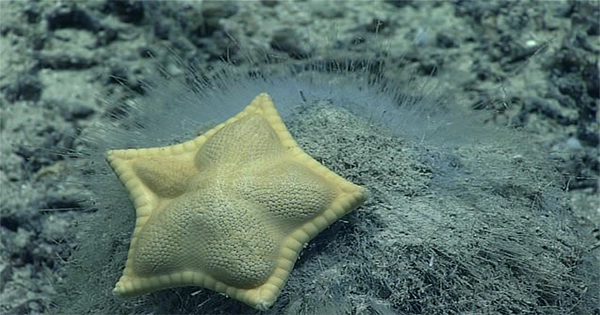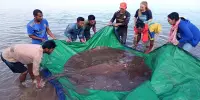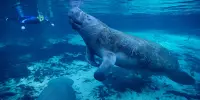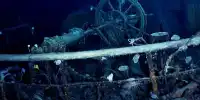This year, scientists operating a remotely operated vehicle (ROV) in the Caribbean Sea came across some blue goo and a strange critter. Although the cerulean lump has not yet been recognized, tunicate, sponge, or a type of soft coral are potential possibilities.
National Oceanic and Atmospheric Administration (NOAA) Ocean Exploration tweeted, “Have you heard about the latest #Okeanos mystery?” This “blue #goo” critter, which was frequently spotted off St. Croix, perplexed experts, who believed it might be soft coral, a sponge, or a tunicate (but definitely not a rock!).
According to the NOAA’s website, the strange blue substance was discovered on Dive 08 of the third Voyage to the Ridge 2022 expedition. They traveled on an expedition to the Caribbean Sea, where they encountered the unexplained blue creature numerous times in the waters southwest of St. Croix.
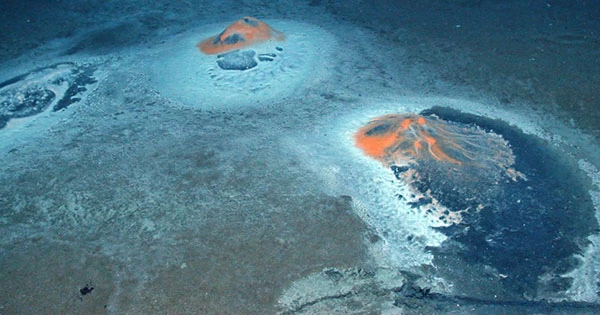
The “unidentified blue organism” is quite a sight, dressed in acid-washed denim and a bobbly coat to rival the rainbow sea slug.
One of the ROV operators is heard saying in the film, “Okay, we’ve seen a bunch of these, and I guess the mystery will remain until a sample can be taken. “We all enjoy a good mystery, but we’re still not sure,” one person said.
The identification of the blue goo will probably involve tunicate, sponge, or soft coral. Soft corals like Sansibia Flava and Smurf polyps would undoubtedly show that this group of creatures isn’t ashamed to sport a bit blue.
Haliclona caerulea, a blue type of ocean sponge, can also be found in the Caribbean. Additionally, there are tunicates like salps (not to mention Tethys vagina) and ascidians, which our blobby “blue biomat” would fit in perfectly with.
It was a relief to know that one positive ID was no longer an option given the range of possibilities:
I can assure you that it is not a rock.
The scientists in the mystery blue goo video can be heard discussing how frequently they come across at least one unusual organism per dive aboard the NOAA’s Okeanos Explorer, which is no stranger to ocean curiosities. They’ve previously discovered starfish that resemble ravioli and odd holes in the seafloor that appear to have been made by humans.
Although the mysterious blue goo is now classified as a UOO (unidentified ocean oddity), deep water exploration wouldn’t be nearly as exciting without the occasional alien.
